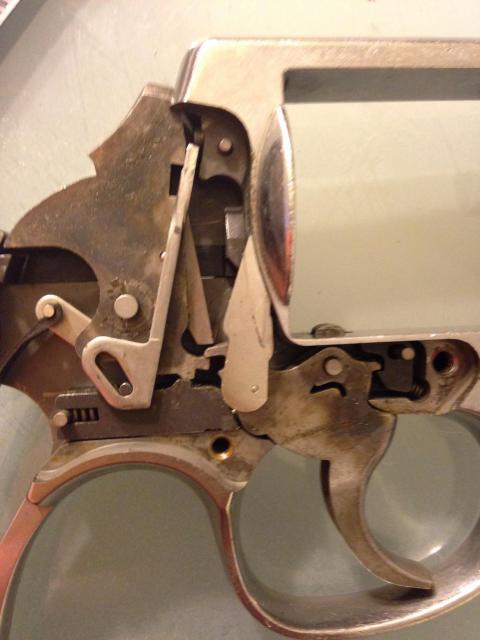I have owned many, many revolvers through the years and have changed the mainspring (hammer spring) on many of them. Always lighter. I usually change if the mainspring is heavy enough that it interferes with my accuracy. This is what I have noticed.
1. My older S&Wís (from the 1920ís through the 1960ís in both centerfire and rimfire) do not need a mainspring change, in my opinion.
2. The S&Wís I have from the 1980ís or newer have much heavier mainsprings (J, K, and L frame). I have lightened the centerfire ones (usually .32, .38, or .357) with aftermarket springs (leaf and coil). I have not had any problem with any of them failing to ignite the primer. I donít have any newer rimfires, so I donít know if they have heavier mainsprings (but I am guessing they do) or if there would be a problem with ignition.
3. I have only a few Coltís, mostly old (1930ís to 1950ís), and have not had to change the mainsprings with them.
4. All the Rugerís I have (SA and DA) really, really need lighter springs. The DA ones are the worst. They usually come in a 3-spring pack. I have had several problems with occasional failures to fire with the lightest spring. The middle spring does not have an ignition problem with my loads. It is a big improvement, but the trigger pull is still not as good as a S&W or original Colt. Remember to clean up the trigger return box for its spring before reassembly (DA ones) whether you use the original spring or not. Ruger single-actions donít have as many choices and have not been any problem.
5. The springs for the Uberti single-actions are easy to change and have not been any problem at all. The most important thing to change is the trigger/bolt return spring. Use a wire one, not a leaf one.
6. Several other miscellaneous revolvers I have could use a mainspring change, but I have not been able to find a replacement for them. H&Rís and Charter Arms are a couple of examples. The Charter Arms revolver has one of the heaviest mainsprings of any gun I own. I may someday get around to shortening the spring with a grinder (or thinning it; I have not taken it apart to see), but I have hesitated, because of a failure in doing that on a different gun many years ago. It was very difficult to get a replacement stock mainspring back then (this was in the pre-Internet and pre-warehouses for gun parts days).
7. Sometimes I also change the trigger return spring in DA's along with the mainspring (they often come as a package), but not too often. If the stock trigger return spring is very strong, I may change it. If it is not too strong, I leave it alone (try it without the mainspring attached). One time I changed it on a Ruger and it was too weak. Failure for the trigger to return quickly really messes up shooting.
Does anybody have any other experiences to add?

|
   
   
|


|




 Reply With Quote
Reply With Quote












